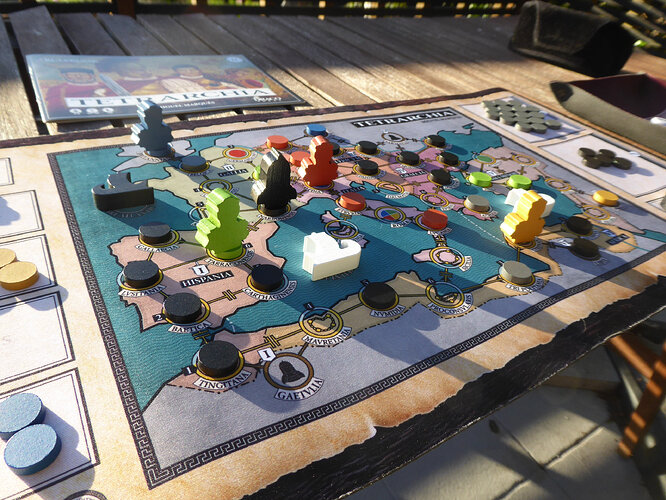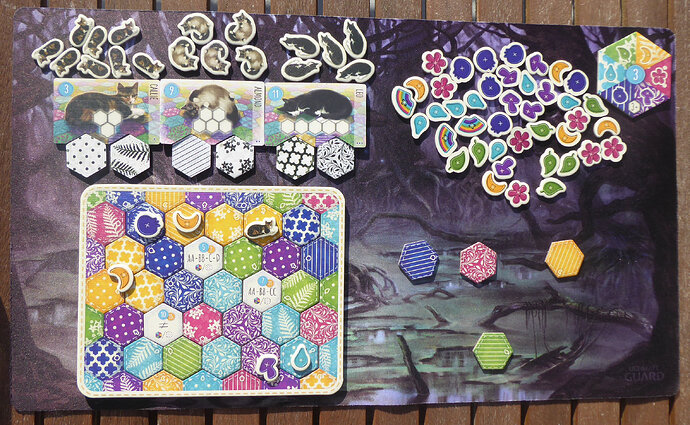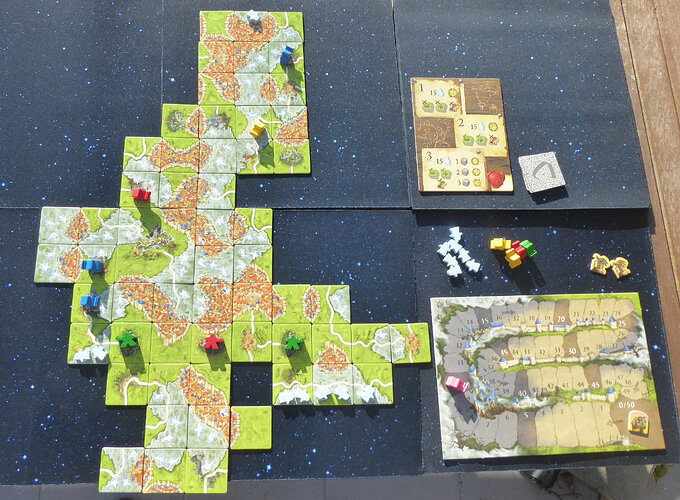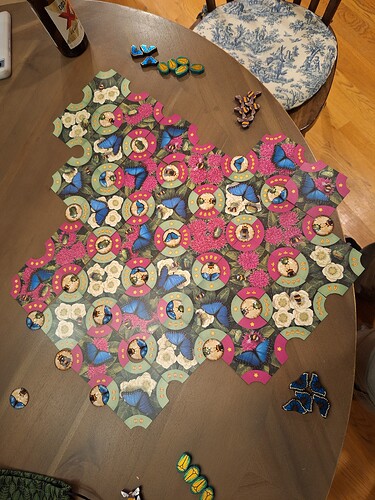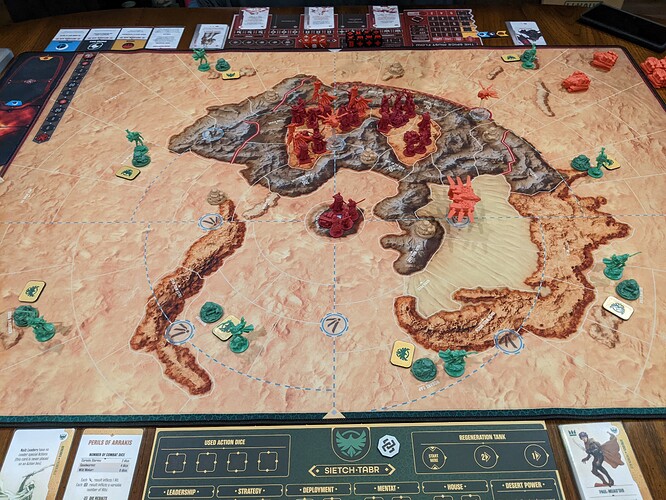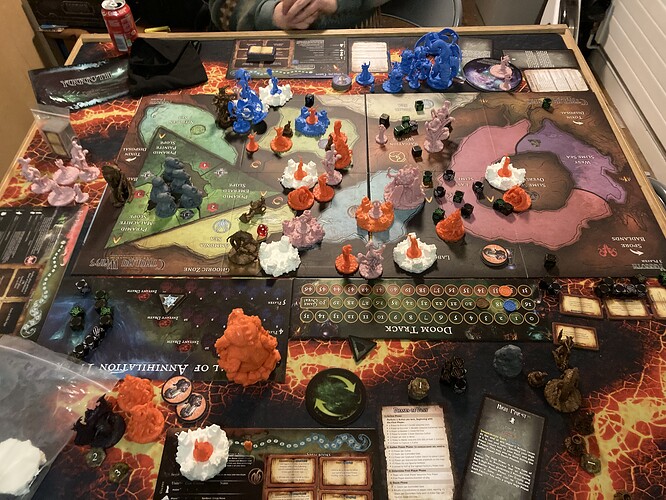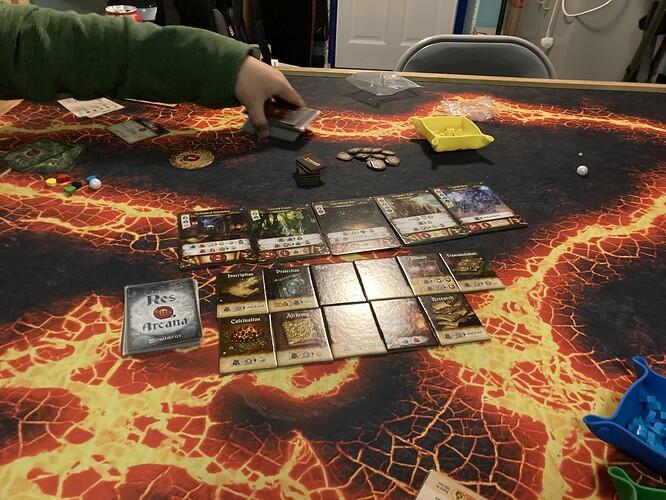It is hard to pin down where it began. Quite likely in a rocking chair in a dark room, a warm baby asleep but restless on my chest, and a thumb grown weary of instagram and repetitive word games.
A readout on 18xx you are under no obligation to read.
This begged the question, which of the board games on my tablet could work on a cell phone? Which in turn led to Steam again, which resurfaced the question of what is the deal with Martin Wallace and all these games called Steam are they the same or not? Age of Steam, it turns out, came first and was a first attempt at bringing 18xx to the masses, with some of the trappings of train games packaged into a thorny Euro casing.
It may also have begun when the hideous Wabash Cannonball was reprinted, making the less hideous and nearly playable Chicago Express affordable again. That raised an age-old question, do I want this?
In any case, I was reading about trains. 18xx, the trainy destination for whatever “grognard” would be for trains instead of war, was always mentioned as a reference point. This led to backroom conversations with the Initiates and a hunt for train-shaped rabbits down the proverbial hole.
18xx, surprisingly, has well defined consensus on where to start, apart from the fact that it isn’t as monolithic as it looks from the outside. First, some chap named Francis Tresham made 1829, about the economics of building a train network. Then someone else made 1830, about the worst imaginable business practices and generally being a dick during the industrial revolution. Tresham declared the latter awful.
Now we have 1829 and all its children, generally called the “Run Good Companies” branch of the family. And 1830 and it’s unkempt brood, called the “Stock Market Shenanigans” branch. If you want to try out the latter, you play 18Chesapeake, which isn’t a game so much as a tutorial that plays out according to script. You don’t buy this one, you only play it once. If you want a starter you can play, you play 1889 Shikoku.
On the 1829 branch of the family, it’s 1846: Race for the Midwest. By Tom Lehmann, who would later make Race for the Galaxy. I guess it’s a thing for him. Though, from his picture, I doubt he’s been in many races. Likely lose to Gigli.
I’ve played both now and it is fascinating to see how the games differ in flavor despite the common ruleset. 1889 Shikoku is markedly destructive in its emphasis while 1846 feels constructive.
It plays out like this: In Shikoku, it’s hard to start a company. Once you do, that company gets an immediate nest egg which is, for all intents and purposes, nearly all the money it will ever have. It is your job to embezzle as much of that money as you can while spending just enough to build a bridge from which you can leap to another, healthier company. If you play your cards right, you may be able to dump the rotting corpse of your company on another greedy bastard who was trying to siphon off your profits. If your opponents are too canny, you leave it around, on life support, barely nosing above bankruptcy for the remainder of the game while you run your new shiny company for profit.
It’s fascinating. A bit like parkour, especially to watch the more experienced players set the balance of just how much to invest and how much to embezzle, when to jump, and of course trying to hustle the game to the point where someone else is left on a rusted train with no routes. For my part, the game was less about winning and more about avoiding bankruptcy, trying to anticipate the next era flying at me and figuring out where I’d find money to buy modern trains.
Now 1846 is very Lehmann. Every game of 18xx has privates, which are just “variable player powers attached to modest income.” And also one of the many ways to embezzle. Lehmann’s privates are a cut above 1889, each one whispering a bit of theorycrafting as you trace the board. Each game offers different setup, as well, with corporations rotating in or out of availability.
But let’s get to the juice oozing from this steak. Starting a company here is easy. Just a few bucks and you’re ready to run. A nice, little, baby company. Poor. Maybe buy a locomotive. Lay a track. Hopefully there’s another city nearby, because now you’re out of cash. But run that locomotive, and the cash flows back to both you (the player) and you (the company). Now we’re cooking with gas! And get this, the only way for other players to stop this from happening is to give you money. They have to buy your company’s shares, replacing your drizzle of income with a windfall. So you have to, have to buy them, but it’s painful to give your opponent their next locomotive in order to disrupt their long term prospects.
This is 1846’s constructivity. Things start small and grow. The game here is about managing that growth, protecting it from vultures, being a parasite on everyone else’s growth. Some companies stumble and live on the mezzanine, but there are no empty husks with empty coffers here.
Now, Shikoku has some huge turning points - when one player is leaping from the end of their crumbling bridge and everyone is scrambling for position in the next chapter of the game. In between there’s a lot of meandering and mulling. With 1846, every stock round (when the money is changing hands) was fraught. Do I fund my company now? Do I wait until the stock price goes up, so I can fund it more? Will someone else jump in if I do that? Will they take my company (sorry, @Pillbox, I had the cash) if I wait? Do I invest in someone else? Will that help them more than me? Should I give my company my money, dropping my score, or withhold dividends…also dropping my score…
The money flow was dynamic and each in and out came with serrated fishhooks. The game was still mean, with some companies changing hands, a lot of blocking on the board. But it wasn’t a deathmatch. It was a scramble to the top of a greased flagpole where your opponents made the best footholds.
I will say this, Shikoku feels more other. I haven’t played any other game like that. 1846 feels like a Euro. I mean that well. It’s a good, complex, interactive, balanced, sharp-edged Euro. But you’ve got your company to build, your score to monitor, and your opponents to block and evade as you do so. Shikoku’s otherness is a point in its favor.
However, 1846 felt like the 10/10 game. No laurels are awarded after 1 play, but I can certainly see this entering the top 10 or top 5.
